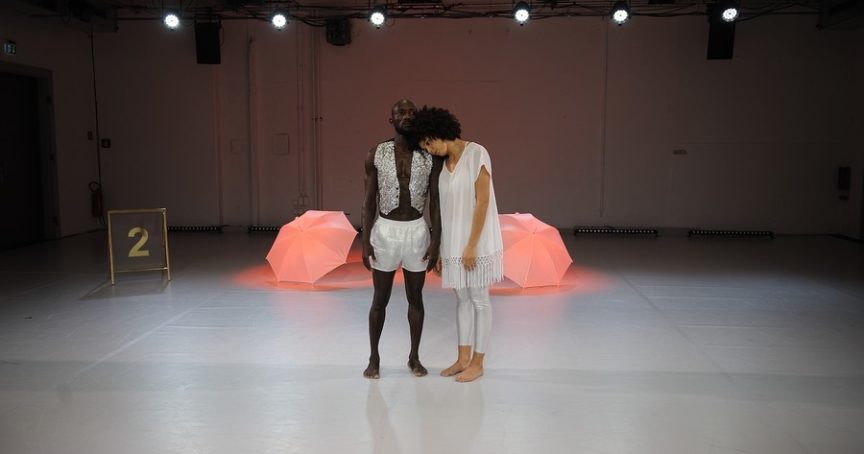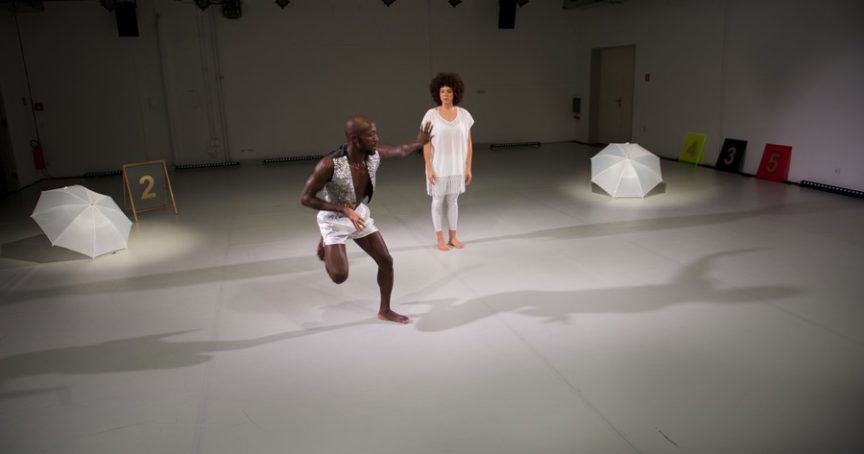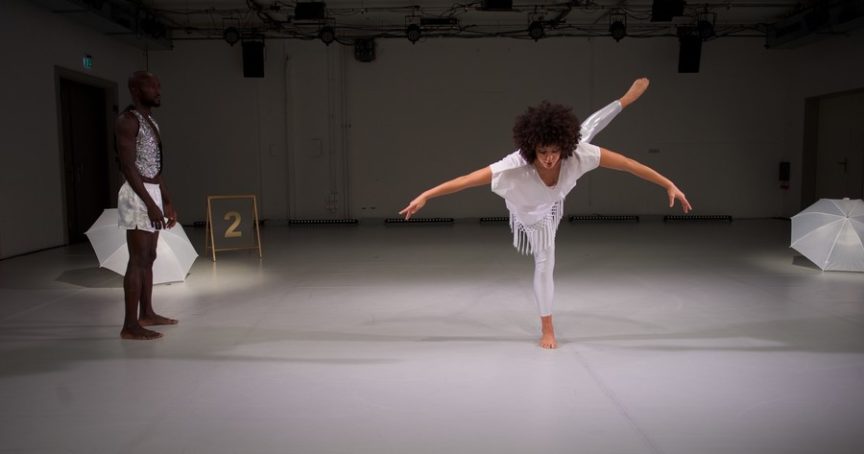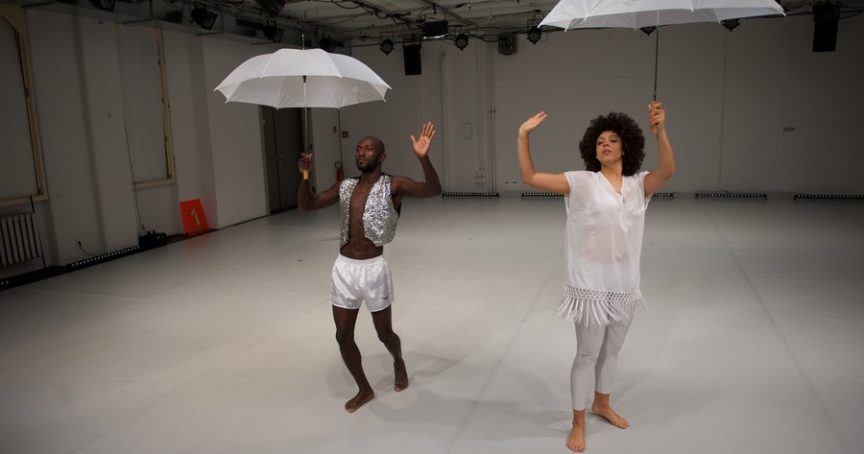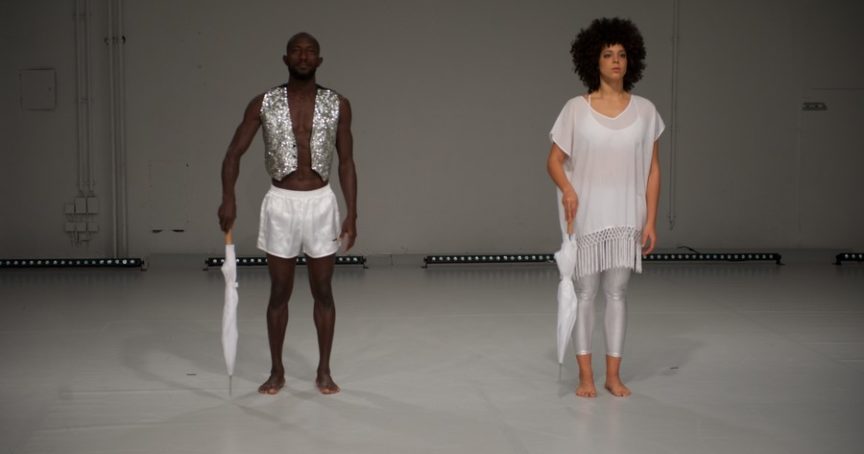Seeing Alvin Ailey
2016, Duett
about the piece
Alvin Ailey’s work is one of the most famous expressions of African-American identity in dance. In what is probably his best-known piece “Revelations”, he explored his childhood in the South of the USA, thus creating an important work of modern dance. Dancer-choreographer Dominique Rosales, who now lives in Berlin, was once a member of the company and danced in the piece herself. The work shaped her and her further career. Ailey’s choreographies are based on the formal language of ballet. Without practicing this form, he could not have succeeded in expressing his Afro-American identity. For Ahmed Soura, however, this detour via the aesthetics of ballet is difficult to comprehend. As someone who has always seen his training as a patchwork activity, ballet aesthetics dominate the bodies of the Alvin Ailey Company’s dancers far too much. “Seeing Alvin Ailey” welcomes these different views and attempts to use dance as a means to a debate them.
videos
credits
Concept, Choreography: Christoph Winkler | Dance, Choreography: Dominique Rosales & Ahmed Soura | Set and Costumes: Lena Mody, Valentina Primavera | Head of Tech: Martin Pilz | Camera: Walter BickmannTanzforum Berlin | Production: ehrliche arbeit – freelance office for culture.
A Christoph Winkler and ehrliche arbeit production, co-produced by SOPHIENSÆLE and monsun.theater Hamburg. Made possible by the Governing Mayor of Berlin - Senate Chancellery - Cultural Affairs and the National Performance Netz (NPN) Coproduction Fund for Dance, which is funded by the Federal Government Commissioner for Culture and the Media on the basis of a decision by the German Bundestag. Media partner: taz.die tageszeitung.
reviews
Analytically rich and formally convincing is "Study 2: Seeing Alvin Ailey" with Dominique Rosales and Ahmed Soura. It successfully uses dance to engage in a debate on what the announcement calls: Ahmed Soura’s difficulty in comprehending Alvin Ailey's "detour” use of ballet to "express his Afro-American identity". His duet partner, Dominique Rosales, was once a member of the iconic Alvin Ailey Dance Company and as such also danced in "Revelations", an early classic of the company's repertoire since 1960. When Rosales and Soura mark individual sequences from "Revelations", it immediately becomes clear how deeply Ailey's vocabulary is anchored in Rosales' body and how far away it is from Soura’s: as she adeptly stretches her leg into arabesque, he remains bow-legged beside her. As she interweaves jazz dance elements with ballet movements, he falls back on his own repertoire, which provides a powerful and dynamic frontal contrast to the softly flowing vertical movements. This confrontation is not commented on. Neither of the physical forms of expression or dance techniques are exaggerated or dismissed. The audience is left to draw their own conclusions from what they have seen. Here, we truly have the chance to trace the complex colonial and postcolonial influences as well as the confrontations they cause without well-meaning paternalistic gestures. - Elena Philipp, tanzraumberlin.


